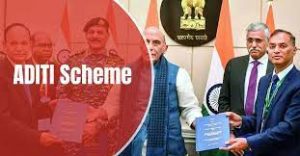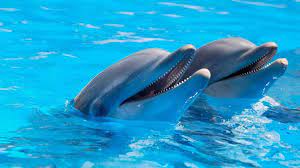Today’s Current Affairs: 6th Mar 2024 for UPSC IAS exams, State PSC exams, SSC CGL, State SSC, RRB, Railways, Banking Exam & IBPS, etc
Table of Contents
International HPV Awareness Day:

Every year, March 4 is observed as International HPV Awareness Day.
- Human Papillomavirus (HPV) is a group of more than 200 related viruses, of which more than 40 are spread through direct sexual contact.
- Among these, two HPV types cause genital warts, and about a dozen HPV types can cause certain types of cancer. More than 95% of cervical cancer is caused by the HPV virus.
- It is the most common sexually transmitted infection (STI) globally.
- It also spreads through skin-to-skin contact.
- Once infected, most people do not develop any symptoms, thereby not being aware that they have the virus.
- Getting vaccinated against HPV helps prevent cancer in men and women.
- HPV Vaccination prevents HPV infections that can progress to cancer or genital warts.
- The HPV vaccination is more efficacious if given between the age group of 9-26 years.
- Once a person gets HPV, the vaccine may not be as effective.
- The HPV vaccine isn’t given during pregnancy.
Project Seabird:

The Defence Minister will inaugurate two big piers and seven towers with 320 homes for Navy officers and Defence civilians as part of Project Seabird at Naval Base Karwar in Karnataka.
- Project Seabird involves creation of a naval base at Karwar, Karnataka, on the west coast of India.
- In the post-Indo-Pak War of 1971 scenario, India learned that the Indian Navy needs an additional naval base since Mumbai Harbour faced congestion, which led to security issues for its Western Fleet.
- It was initially sanctioned in 1985, and the foundation stone was laid on October 24, 1986, by Rajiv Gandhi.
- This is a massive project with the first sealift facility in the country and a transfer system for docking and undocking ships and submarines.
- Its first phase, which included the construction of a deep-sea harbour, breakwaters dredging, a township, a naval hospital, a dockyard uplift centre and a ship lift, was commissioned in 2005.
- The development of phase 2 of INS Kadamba commenced in 2011.
- This phase is further divided into 2A and 2B. It was planned to expand the facilities to dock additional warships and a new Naval Air Station, among other projects.
- Once completed, it will be the largest naval base in the Eastern Hemisphere.
- It will be able to accommodate around 32 warships, 23 submarines and hangers for several aircraft.
Women, Business And Law Index:

India’s ranked improved to 113 out of 190 countries in the World Bank’s Women, Business and Law index.
- Women, Business and Law Index to measure how laws and regulations affect women’s economic opportunity on a scale from 0 to 100, where 100 means equal legal rights for men and women.
- The report covers eight related areas: Mobility, workplace, pay, marriage, parenthood, entrepreneurship, assets and pension.
- The data offer objective and measurable benchmarks for evaluating global progress toward legal gender equality.
Highlights :
- It is the 10th edition of the report.
- Globally, none of the countries has a full score in the new index, indicating that women did not enjoy equal rights in any of the countries.
- India’s ranking improved to 113 out of 190 countries.
- Indian women enjoyed 60% of the legal rights given to men as per the new report, lower than the global average of 64.2%.
Risa Textile : GI Tag

Tripura’s traditional tribal attire ‘risa’ received the Geographical Indication (GI) tag recently.
- Risa Textile is a handwoven cloth used as a female upper garment and also as headgear, a stole, or a present to express respect.
- It is woven in colourful designs and has a crucial social and religious significance.
- Adolescent Tripuri girls are first given a risa to wear in an event called Risa Sormani, around age 12 to 14.
- The risa is used in religious festivals such as Garia Puja by tribal communities, a turban by men during weddings and festivals, a cummerbund over the dhoti, a head scarf by young girls and boys and a muffler during winters.
- It is presented as a mark of honour to distinguished recipients.
- Risa is common in almost all 19 indigenous tribal communities of Tripura.
- The traditional Tripuri female attire consists of three parts — risa, rignai and rikutu.
- Risa is a handwoven cloth used as a female upper garment.
- Rignai is primarily worn as the lower garment and literally means ‘to wear’.
- Rituku is mainly used as a wrap, or like a ‘chunri’ or a ‘pallu’ of the Indian saree. It is also used to cover the heads of newly married Tripuri women.
- The complete Tripuri attire is claimed to have originated even before the time of the Manikya kings, who ruled Tripura for over 500 years starting from the 15th century.
ADITI Scheme:

The Union Minister of Defence launched the ADITI scheme during DefConnect 2024.
- Acing Development of Innovative Technologies with iDEX (ADITI) is a scheme to promote innovations in critical and strategic defence technologies.
- It aims to develop about 30 deep-tech critical and strategic technologies in the proposed timeframe.
- Under this scheme start-ups are eligible to receive grant-in-aid of up to Rs 25 crore for their research, development and innovation endeavours in defence technology.
- This scheme worth Rs 750 crore for the period 2023-24 to 2025-26.
- It falls under the iDEX (Innovations for Defence Excellence) framework of Department of Defence Production, Ministry of Defence.
- It also envisages to create a ‘Technology Watch Tool’ to bridge the gap between the expectations and requirements of the modern Armed Forces and the capabilities of the defence innovation ecosystem.
- In the first edition of ADITI, 17 challenges – Indian Army (3), Indian Navy (5), Indian Air Force (5) and Defence Space Agency (4) – have been launched.
- To motivate young innovators, iDEX was expanded to iDEX Prime, with the assistance increasing from Rs 1.5 crore to Rs 10 crore.
Household Consumption Expenditure Survey 2022-23:

The Ministry of Statistics and Program Implementation disclosed the general results of the All India Household Consumption Expenditure Survey conducted from August 2022 to July 2023.
Highlights:
- The estimates of average monthly per capita consumption expenditure were generated without imputing the value figures of the items received free by the households through various social welfare programmes such as Pradhan Mantri Garib Kalyan Yojana.
- It reveals a 33.5% increase in MPCE in urban households since 2011-12, reaching ₹3,510, while rural India’s MPCE increased by 40.42% to ₹2,008.
- In 2022-23, 46% of rural household expenditure and 39% of urban household expenditure were on food items
- The bottom 5% of India’s rural population, ranked by MPCE, has an average MPCE of Rs. 1,373 while it is Rs. 2,001 for the same category of population in the urban areas.
- The top 5% of India’s rural and urban population, ranked by MPCE, has an average MPCE of Rs. 10,501 and Rs. 20,824, respectively.
- Sikkim has the highest MPCE in both rural (₹7,731) and urban areas (₹12,105), while Chhattisgarh has the lowest with ₹2,466 for rural households and ₹4,483 for urban households.
- The rural-urban difference in average MPCE, among the states is the highest in Meghalaya (83%) followed by Chhattisgarh (82%).
- Among the UTs, MPCE is the highest in Chandigarh (Rural Rs. 7,467 and Urban Rs. 12,575), whereas, it is the lowest in Ladakh (Rs. 4,035) and Lakshadweep (Rs. 5,475) for rural and urban areas respectively.
- Since the 1999-2000 survey, the share of expenditure on food has gradually declined and the share of non-food items has increased for both urban and rural households.
- A decline in food spending is understood as an increase in incomes, which then means having more money for other expenditures like on medical, clothing, education, conveyance, durables, fuel, entertainment, among other things.
- The recent survey result showed that the share of cereals and pulses within overall food consumption expenditure has been reducing, both in rural and urban households.
- Among the non-food items, the share of spending on conveyance was the highest.
- Till 2022-23, fuel and light used to see the highest consumption spending among the non-food items.
India’s First Dolphin Research Centre:

India’s inaugural National Dolphin Research Centre (NDRC) marks a significant milestone in the conservation efforts for the endangered Gangetic dolphin (Platanista gangetica).
- Located strategically near the Ganga river in Patna, Bihar, the NDRC aims to be a hub for comprehensive research on various aspects of Gangetic dolphins, including behavior, survival skills, and causes of mortality.
- Bihar is home to around half of the estimated 3,000 Gangetic dolphins in India.
- The Ganges river dolphin, discovered in 1801, historically inhabits the Ganges-Brahmaputra-Meghna and Karnaphuli-Sangu river systems in India, Nepal, and Bangladesh.
- Recent studies in the Ganga River Basin show their presence in the mainstream and tributaries like Ghagra, Kosi, Gandak, Chambal, Rupnarayan, and Yamuna.
Samudra Laksamana:

India and Malaysia conducted the bilateral maritime exercise Samudra Laksamana from February 28 to March 2, 2024, in Visakhapatnam.
- The exercise involves the Indian Naval Ship Kiltan and the Royal Malaysian Ship KD Lekir.
- Other exercises between India and Malaysia is xercise Harimau Shakti which is a bilateral military exercise between the Indian Army and the Malaysian Army, aimed at enhancing cooperation and interoperability in counter-terrorism and jungle warfare.




